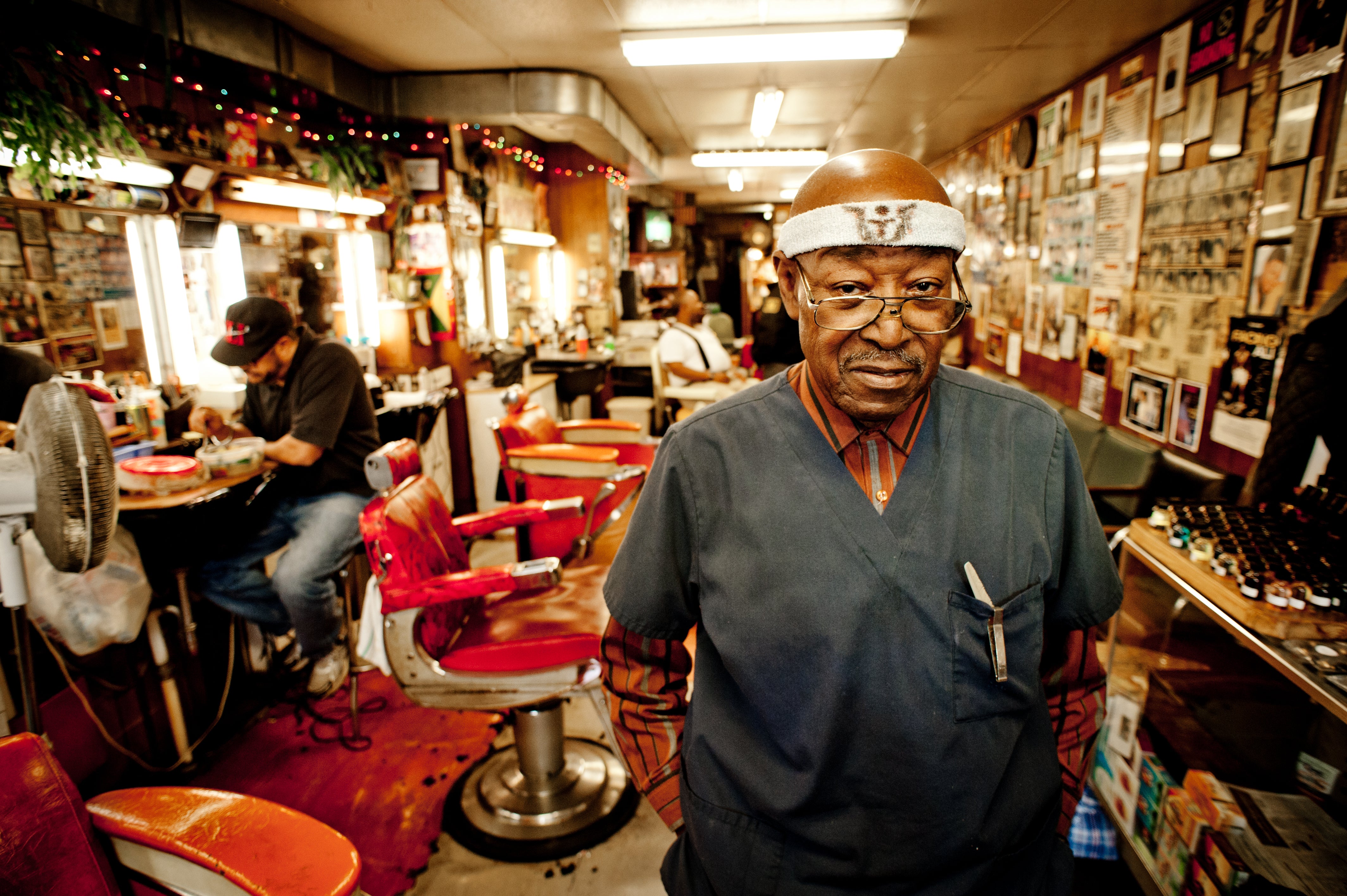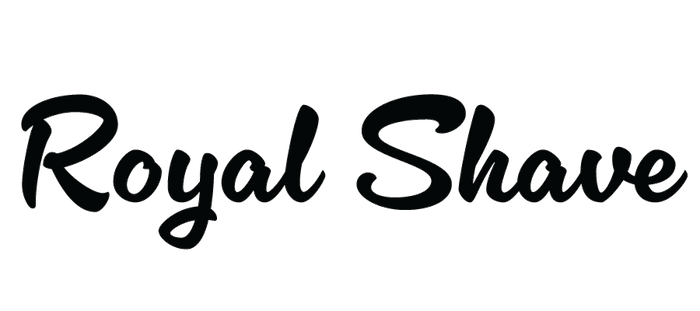
Tony's Barbershop in Greenwich, Connecticut
Walls of memorabilia. The smell of Pinaud Clubman and leather, mixed with the telltale laughter of guys just hanging out and having a good time while getting a fresh haircut. Classic barbershops are unmistakable. But they’re also disappearing. That’s why, in September 2011, San Diego-based photographer
Rob Hammer set out on a nationwide journey to document these amazing old shops. Sticking to back roads and small towns, Hammer discovered gems in every state.
For 2 ½ years, Hammer logged 45,000 miles and visited over 600 shops, capturing these community watering holes and their charismatic owners. From there, he compiled the 70 barbershops that stood out to him most in his book,
Barbershops of America, along with memorable quotes from the owners.
We had the pleasure of talking to Hammer about what he wanted to capture within the barbershops, the similarities and differences between shops across America, and one of the most memorable barbers he met on the journey.
What inspired you to photograph barbershops all over America?
I’ve always been into barbershops; they’re great places for men to hang out, to B.S. with each other and not have to worry about anything. As I got older and traveled around, living in other places, I noticed it was really hard to find a good barbershop and barber. I realized that these old barbershops were starting to go away. The barber was either retiring, dying, or getting kicked out of their place by a higher-paying tenant. I thought that was really sad. For me, it’s a great piece of America being taken away by these salons that are a dime a dozen, flashy, with no character.
Little by little I started looking for old shops in San Diego, and then I branched out to Southern California and Arizona. Eventually the project grew, and I knew I had to document shops in all 50 states before they were gone for good.

Angel's Barbershop in Seligman, Arizona
What traits make a barbershop a barbershop?
The simple answer is that a real barbershop is authentic. It's not trying to be cool, it just is. The barber has his space the way he likes it, and the people who appreciate that stay customers, then become lifelong friends. The ones who don't go elsewhere.
What was your methodology to finding barbershops to photograph?
I spent a lot of time on the road. And most of that time was spent off the highway, on back roads, in small towns that most people never hear of. That's where I found the real gems. At first I tried doing research on the internet, but that produced mediocre results at best. After arriving at barbershops I found online, they were always a letdown. They weren't as they appeared in pictures. And after a while, I realized that the shops I wanted weren't in any pictures anywhere. They were off the grid. So that's where I stayed.
What did you want to capture within these barbershops?
There are only so many ways you can arrange barber chairs and mirrors. Yet each real shop has tangible differences. The space has been occupied for so long that it becomes almost like a social club. A place to hang out with your friends. And in each part of the country, all those friends do things differently. In Wyoming, people hunt. So most likely, a shop in Wyoming will be filled with hunting trophies. In Kansas people love the Jay Hawks. That's life. So most likely, the shops will be covered in Jay Hawk memorabilia. These are the simple things that make them different. The things that I wanted to show. So the viewer can almost get a sense of where they are while looking at the images.

Harry's Barbershop in Biloxi, Mississippi
Barbershops of America was a long-term personal project that took nearly 3 years. As a photographer, how important was it for you to set aside time to shoot what you wanted in additional to commissioned work?
It's extremely important. Any photographer who doesn't shoot personal projects is a moron. Don't get me wrong, I love shooting commercially. And it's extremely rewarding, but there is no better feeling than shooting for yourself, and having that idea come to life. If you only shoot what other people want you to shoot, then your work will never represent you. And you'll always be a hired gun.
When commercial clients hire you because your personal projects stand out, that's when it gets really fun. You're hired because of your vision.
What was your most memorable moment when shooting for this book?
Not even sure how to answer that. Driving around the country for 3 years is an incredible experience. You see so much and learn so much, that afterward, you're practically a different person. I probably can't narrow it down to one moment. So many of the shops were great to be in, and so many of the barbers were such characters, that you can't ever forget them. Food was a big thing for me too. I did a lot of eating everywhere I went.
What about your most memorable barbershop?
Probably shouldn't single out just one, but if I have to, it would be "Honest John's" in Burlington, Kansas. A one stoplight town in the middle of nowhere. John grew up and lived his whole life there. He had been barbering forever, and was still so enthusiastic about it. His whole attitude was so positive and contagious. He knew everybody by name and was greeted warmly by everyone who walked in the door. He couldn't believe that I wanted to take his picture, and could hardly wait to tell his friends about it.
I sent John a print, and called a while later to check in on him. His wife told me he was very sick, but had received the print and hung it above the mantel. More than that, he brought the framed print to the town’s 4th of July party to show everyone. Once in a while I try calling to check in on him, but get a never-ending busy signal.
Writing that made me want to get in touch with him again. So I Googled his name in hopes of finding his phone number, and the first thing that popped up, unfortunately, was his obituary. John was an amazing guy and I feel better for having met him. It's also pretty amazing to see my picture of him as the one they used for his obituary. I've got his picture hanging at my house, too.

Honest John's Barber Shop in Burlington, Kansas

Barber John working on a client at Honest John's Barbershop
How would you describe your photography style?
I think that I have two styles. My commercial style is very edgy and dramatic, involving lots of strobe light. It's a much more complicated process, which I enjoy very much. It's almost addicting. Then the other style that I use for things like the barbershop project is more simple. More documentary I guess?
Which photographers inspire you?
That's a never-ending list. I ingest an insane amount of photography on a daily basis, and have become obsessed with photo books. So my shelves are filled with books by photographers of all different genres. People like Walter Iooss, Neil Leifer, Tim Mantoani, Michael Zegaris, Steven Shore, Joel Meyerowitz, Danny Clinch, Walker Evans, Martin Parr, Gary Land, Michael Muller, and William Albert Allard. There are so many guys out there doing awesome stuff.

Stancil's Barbershop in Albany, New York
Do you have any plans to do something similar in the future?
I have an itch to start this project again. I was recently in India and saw all these barbershop pop ups on the street. The barbers there are amazing.
When I drive around taking photos, sometimes I’ll see some really cool shops. Some young guys have started slick shops that’ll be amazing in 30 - 40 years.
Also, about 3 years ago I started photographing old basketball hoops in strange remote parts of the country. It's sort of similar to the barbershop project, where I just spend tons of time on the road.

Photographer Rob Hammer

 Tony's Barbershop in Greenwich, Connecticut
Tony's Barbershop in Greenwich, Connecticut Angel's Barbershop in Seligman, Arizona
Angel's Barbershop in Seligman, Arizona Harry's Barbershop in Biloxi, Mississippi
Harry's Barbershop in Biloxi, Mississippi Honest John's Barber Shop in Burlington, Kansas
Honest John's Barber Shop in Burlington, Kansas Barber John working on a client at Honest John's Barbershop
Barber John working on a client at Honest John's Barbershop Stancil's Barbershop in Albany, New York
Stancil's Barbershop in Albany, New York Photographer Rob Hammer
Photographer Rob Hammer



